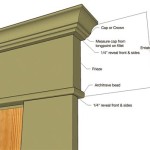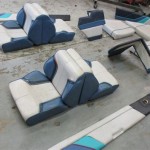Fee Structure for Interior Design Courses: A Comprehensive Guide
Pursuing a career in interior design requires a comprehensive understanding of aesthetics, functionality, and technical aspects. To achieve these skills, aspiring designers often enroll in specialized courses offered by various institutions. The cost of these courses, however, can vary significantly, depending on factors such as program duration, institution reputation, and course format. This article provides a detailed overview of the typical fee structure for interior design courses, exploring the key factors that influence pricing and offering insights into cost-effective options.
Factors Determining Interior Design Course Fees
Several factors contribute to the wide range of fees associated with interior design courses. Understanding these factors can help prospective students make informed decisions about their educational investments. Some key factors include:
Program Duration
The duration of an interior design program is a significant determinant of its cost. Shorter certificate programs typically involve fewer credits and course modules, resulting in lower overall fees. Conversely, longer programs, such as bachelor's or master's degrees, require extensive coursework, lab sessions, and practical experiences, leading to higher overall costs.
Institution Reputation and Location
Prestigious institutions with established reputations in design education often charge higher tuition fees due to their faculty expertise, facilities, and industry connections. Geographical location also plays a role, as institutions in metropolitan areas may have higher operating expenses compared to those in smaller cities or rural locations.
Course Format
The format of an interior design course also affects its cost. Traditional on-campus programs typically involve higher fees compared to online or hybrid programs. Online courses often have lower overhead costs, allowing institutions to offer more affordable options.
Additional Expenses
Beyond tuition fees, students may incur additional expenses, including materials, software, and project supplies. Some programs may require students to purchase specific design software or equipment, which can add to the overall cost. It is essential to inquire about these additional expenses when researching potential programs.
Types of Interior Design Courses and Their Costs
Interior design courses are offered in various formats, catering to different levels of experience and career goals. The following sections explore the typical fee structures for common course types.
Certificate Programs
Certificate programs typically range from a few months to a year in duration and focus on specific skills and software proficiency. These programs are often more affordable than degree programs, with an average cost ranging from $500 to $5,000.
Associate Degrees
Associate degrees in interior design provide a strong foundation in design principles, technical skills, and industry practices. These programs typically take two years to complete and have an average cost of $10,000 to $20,000.
Bachelor's Degrees
Bachelor's degrees in interior design offer a comprehensive education, covering design history, theory, practice, and business aspects. These programs typically take four years to complete and have an average cost of $20,000 to $40,000, but can vary significantly depending on the institution and program.
Master's Degrees
Master's degrees in interior design are ideal for aspiring professionals seeking advanced knowledge and specialization. These programs typically take one to two years to complete and have an average cost of $25,000 to $50,000.
Cost-Effective Options for Interior Design Education
For students seeking cost-effective options for pursuing an interior design education, several alternatives exist:
Online and Hybrid Programs
Online and hybrid programs often offer lower tuition fees compared to traditional on-campus programs due to reduced overhead costs. These programs provide flexibility and convenience, allowing students to learn at their pace and from anywhere.
Scholarships and Financial Aid
Many institutions offer scholarships and financial aid options to help students cover tuition costs. These resources can significantly reduce the overall financial burden of pursuing an interior design education.
Professional Development Courses
Professional development courses can provide targeted skills training in specific areas of interior design. These courses are often shorter and more affordable than degree programs and can be a cost-effective way to enhance existing knowledge and skills.
Community Colleges and Vocational Schools
Community colleges and vocational schools often offer affordable certificate programs and associate degrees in interior design. These institutions provide a high-quality education at a more accessible price point compared to private universities.
By carefully considering the factors discussed in this article, aspiring interior designers can make informed decisions about their educational investments and choose the most suitable and cost-effective options to pursue their career goals.

Janki Devi Fees Structure Vocatinol Centre Admission Certificate Course Late Charges

Fee Schedule For Interior Designers Capella Kincheloe

The Complete Guide To Structuring Interior Designer And Architect Fees Part 1 Types Of Services Corresponding

Idis Brochure Interior Design Scope And Details Course Certificate In Studocu

Mody University Sikar Bid Fees 2025 Course Duration Dates Eligibility

Interior Design Course Fees In Goa 2024 Cad Cam Centre
Nid Fees Structure 2026 Courses Admission And Hostel

Morning 4 Months Interior Designing Courses At 15000 Per Month In Hyderabad Id 24590616855

Janki Devi Fees Structure Vocatinol Centre Admission Certificate Course Late Charges

Interior Design Fees Infographic
Related Posts








